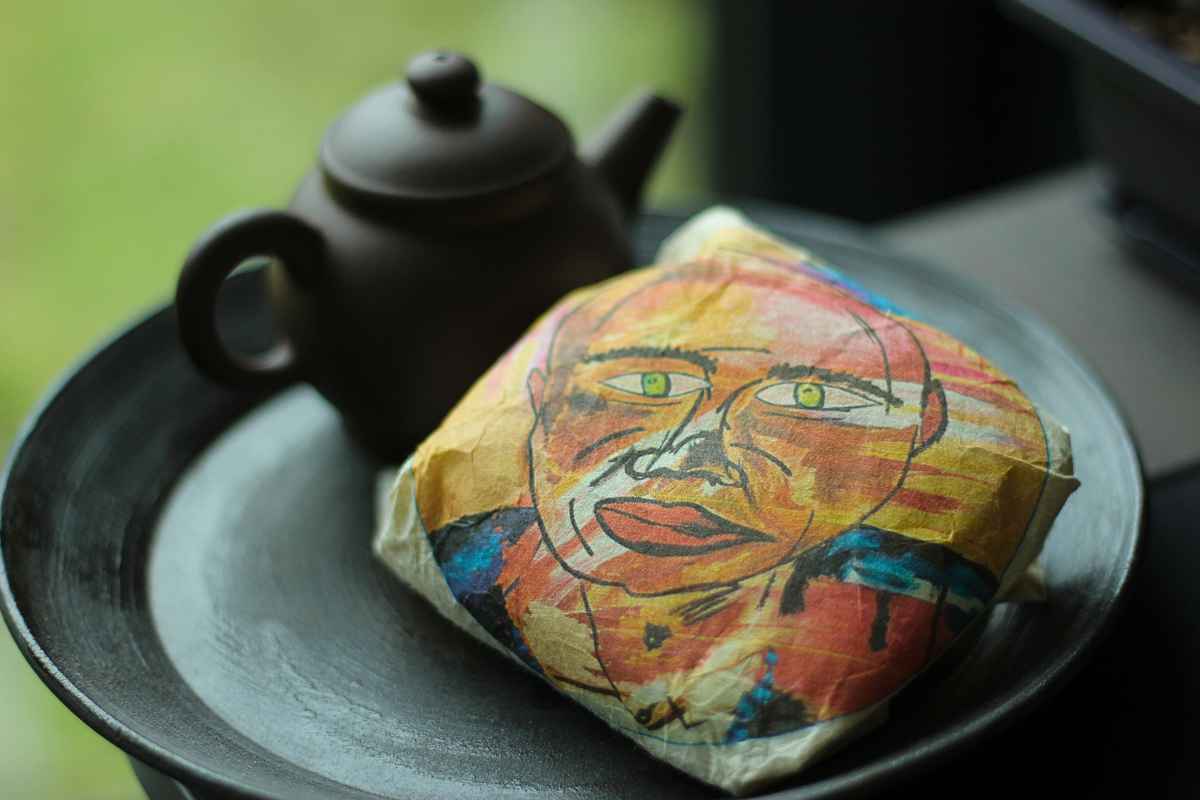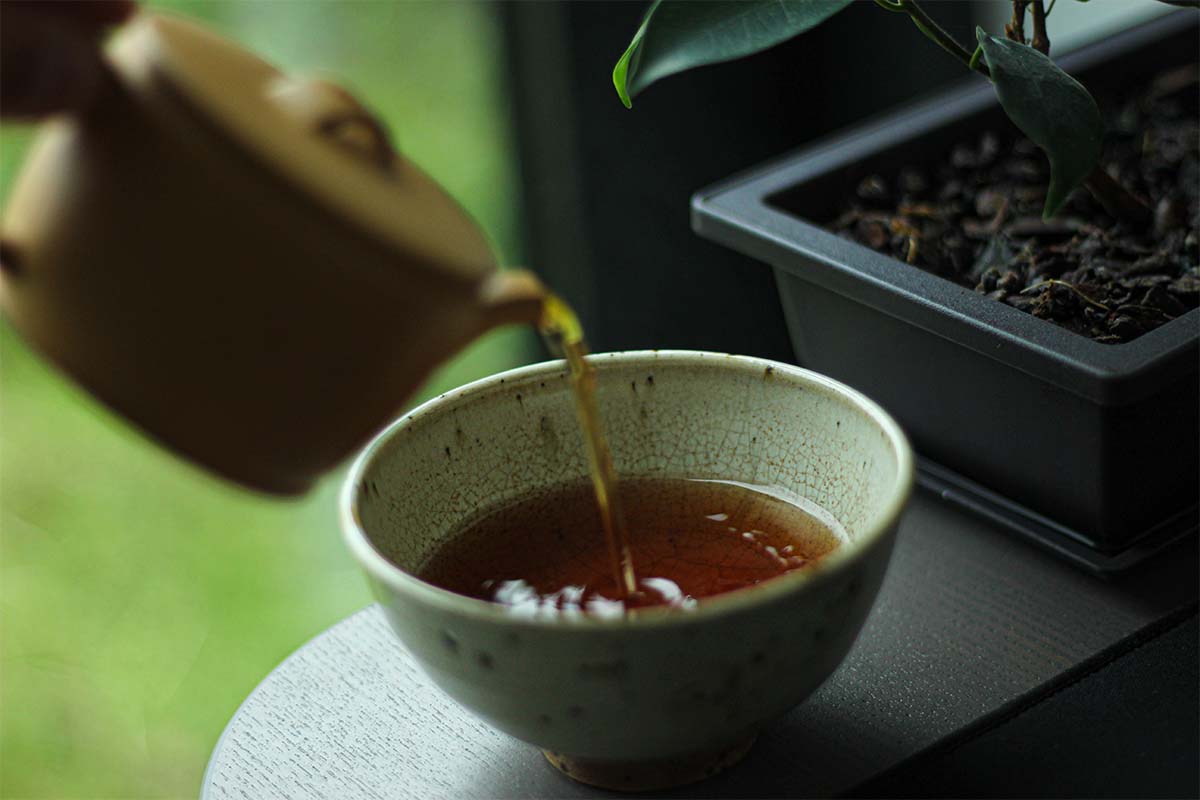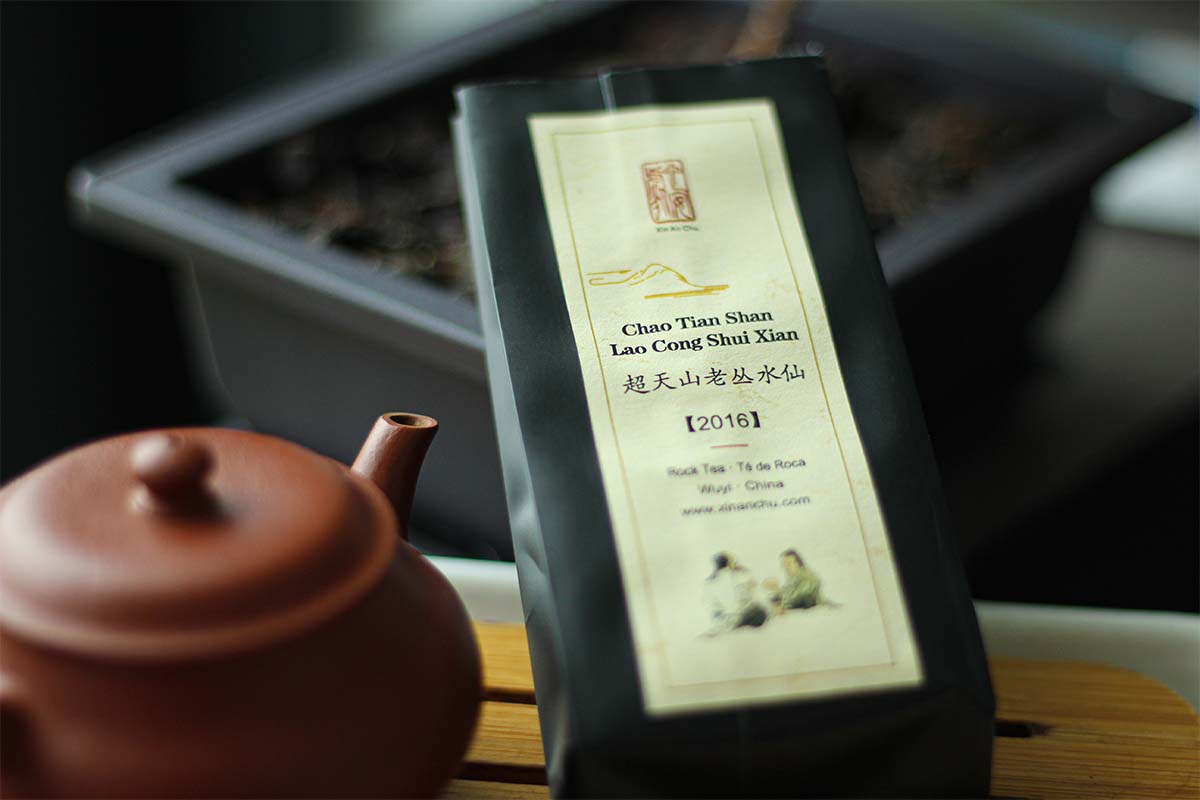Liu Bao is a remarkable but underappreciated subtype of tea for various reasons. If you’re new to it, it might be tricky to make the perfect cup. That is why this article gives you a complete overview of how to brew Liu Bao.
You brew Liu Bao tea by heating water to 100°C or 210°F, weighing between 4-7g of tea, putting the leaves in a brewing vessel (gaiwan or teapot), infusing the tea leaves, and separating the water from the leaves once the infusion is done.
Teaware to brew Liu Bao
Before learning the exact steps of what you need to do to brew Liu Bao, it’s important to learn about the different tools you can use.
Teapot or gaiwan
The tool you definitely need to brew Liu Bao is a brewing vessel. The two most basic brewing vessels are a teapot and a gaiwan. In the Chinese tea ceremony, a relatively small teapot or gaiwan is used to brew tea because it has several practical reasons.

Don’t know where to buy tea online? I made a list of over 300 online tea shops and I keep updating it regularly. You can check it over here
In the Chinese tea ceremony, most brewing vessels are between 80 and 150ml. This allows for full control over the brewing process. You can do multiple short infusions to see how the tea develops throughout the tea session and you need fewer tea leaves to start with.
It seems as if you need more tea than just putting some tea leaves in a big mug, but you’ll get much more tea out of the leaves when you brew them in a small teapot or gaiwan. You can do up to 10 infusions with 5g of tea if you’re using a smaller brewing vessel, while you can only have one or maybe two mugs of tea with 3g…
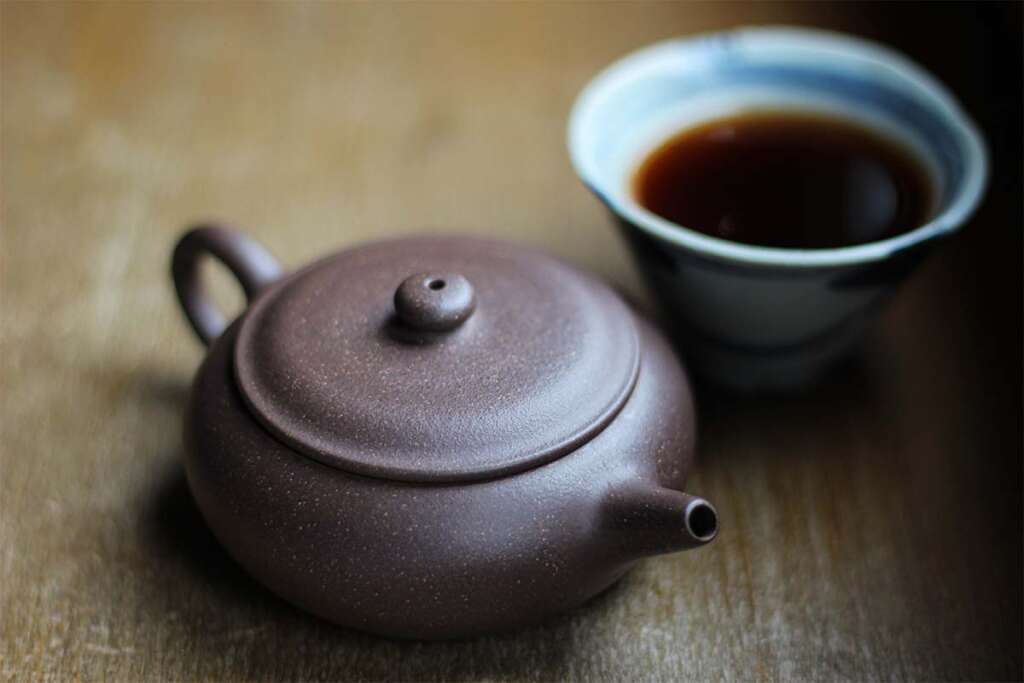
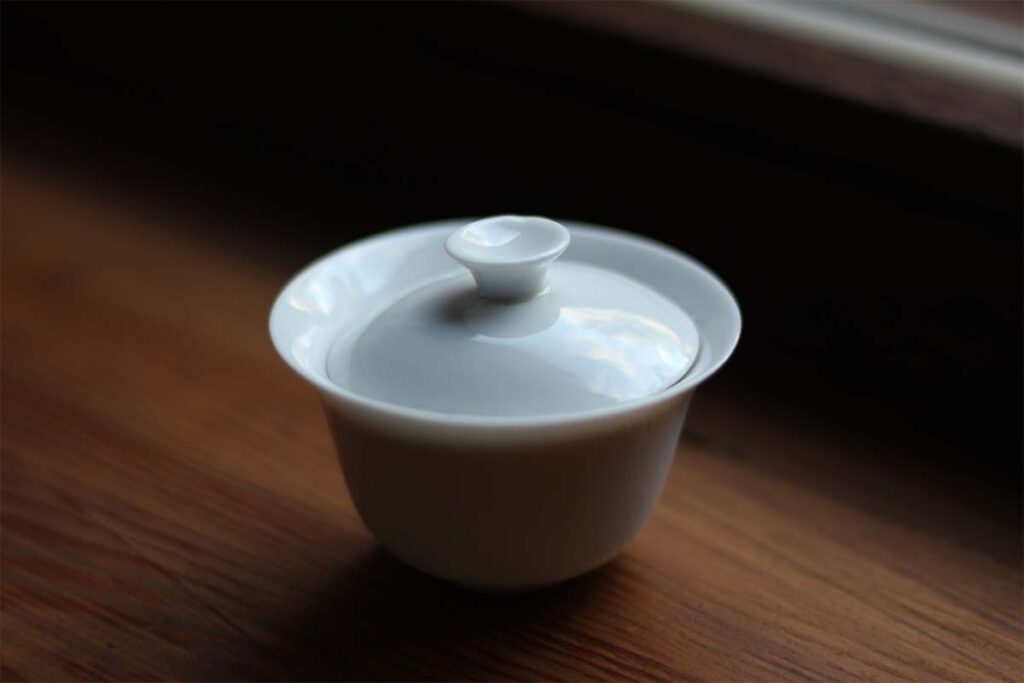
Everyone knows what a teapot is, but not everyone knows what a gaiwan is. It literally means ‘lidded bowl’ and is really beginner-friendly. I suggest using a porcelain gaiwan if you’re starting out because it’s cheap and easy to use.
If you have some experience, a teapot is the better option because it can improve the overall experience. You can use different kinds of teapots, but most people prefer an Yixing teapot. This is a teapot is made from a type of clay from a town called Yixing in China’s Jiangsu province.
Gong dao bei or pitcher
A gong dao bei or pitcher is a commonly used tool in the Chinese tea ceremony. This handy tool makes sure the tea is exactly how you want it.
When you’re using a teapot or gaiwan, chances are high that this brewing vessel is bigger than the cup you’re drinking from. If this is the case, you need something to keep the tea liquor from the teapot because all of it won’t fit in your cup.
You can pour the tea in a gong dao bei or pitcher and then use this to serve tea. If you pour tea from the teapot, drink it, and fill your cup again straight from the teapot, the second cup will be much stronger and might not how you like it.
Even if you have enough cups, there will be differences in flavor between the different cups. You use a pitcher to prevent this from happening because you pour the tea from the teapot into the pitcher and your tea doesn’t get over-brewed.

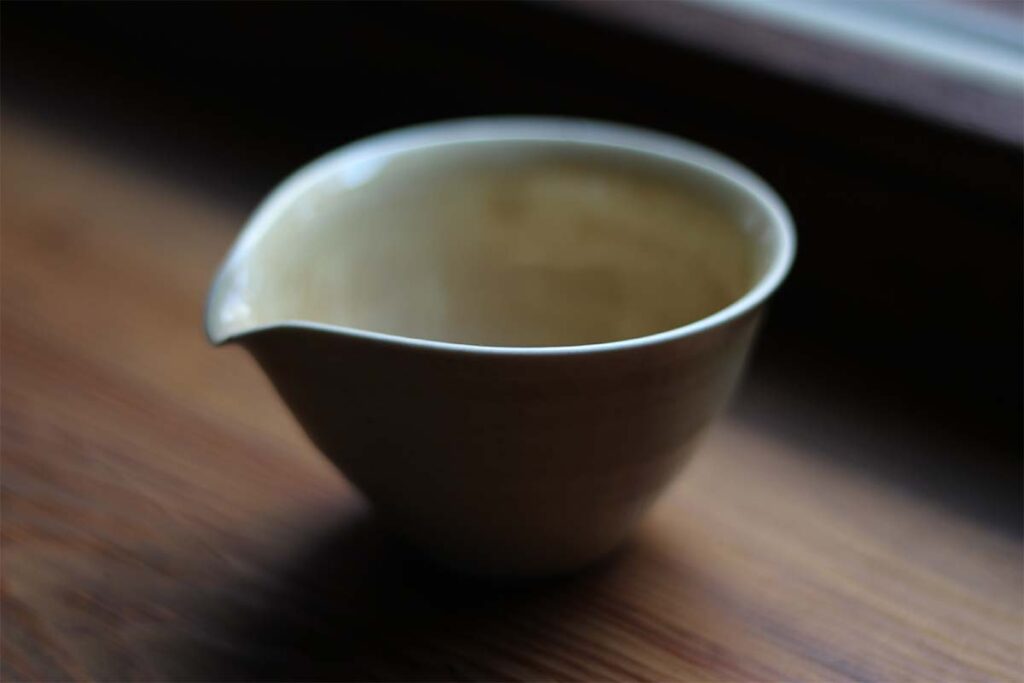

Using a pitcher (or fairness cup) will also make sure all guests at a tea ceremony will get a similar cup of tea. This makes it fair and everyone gets a fair share of tea, hence the name ‘fairness cup’. As you can see in the pictures, there is a wide variety of shapes, sizes, and materials.
Teacups
In a Chinese tea ceremony, small teacups are used for various reasons. Most cups are around 50ml (or even smaller) to make sure you can fully focus on the flavors you’re getting. If you only drink a small amount of tea, you’re more likely to zoom in and focus on what you’re drinking.
Smaller cups are also convenient because you can serve more people with the same amount of tea and the liquor cools down faster. As you can see below, there is a wide variety of shapes and materials for teacups as well.
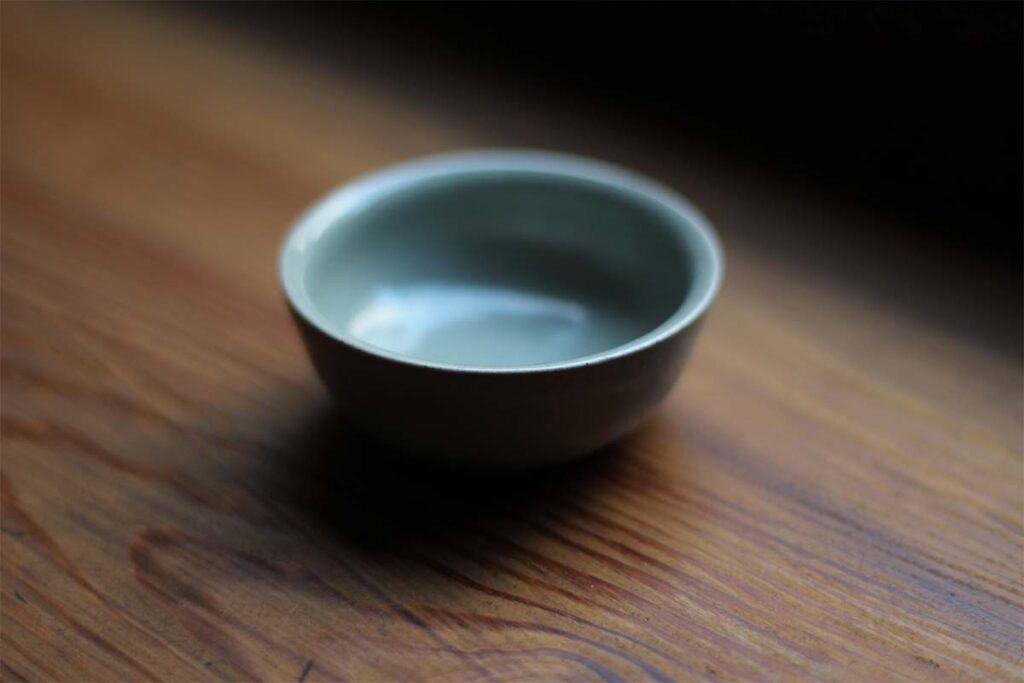


Beginner tips to brew Liu Bao
Below are some tips that might help you when you’re discovering the wonders of Liu Bao tea. These are the basics and will get you very far in your journey to discover the different flavors Liu Bao tea offers.
Keep in mind that these are only guidelines and that you should experiment to see what you like the most. Experimentation is an important element when drinking and brewing tea!
Water temperature for Liu Bao
Liu Bao is a fermented tea so it needs really hot water to get everything out of the tea leaves. It’s produced similarly to shou pu-erh, so the way of brewing Liu Bao is similar as well.
Liu Bao is best brewed using 99°C or 210°F water
Rinsing Liu Bao
Rinsing means pouring hot water over the leaves for the first time and then pouring away the water. This is done to wake up the leaves and open them up for brewing and to remove any dust from the tea leaves.
Just like pu-erh tea, it’s better to rinse Liu Bao before drinking it. Liu Bao goes through artificial fermentation and this fermentation might leave dust or other unwanted particles on the tea leaves.
If you are brewing Liu Bao that has been compressed into a brick or any other shape, it might even need two rinses to fully wake up the leaves. Compressed tea takes longer to open so try reading the tea leaves and see what they need.
Amount of Liu Bao
The amount of Liu Bao you should use depends on the size of your brewing vessel and on personal preference. I recommend starting with around 5g for a 100ml teapot or gaiwan and see how you like it.
If it’s too strong, use fewer tea leaves next time. if you think it’s not intense enough, try adding more leaves. Just like with most other things, experimentation is important to see what you like.
Brewing Liu Bao tea
Here are some simple steps you can follow to brew a nice cup of Liu Bao.
- Heat water to 99°C or 210°F.
- Preheat your teapot/gaiwan, pitcher and teacup by pouring hot water in them and emptying them.
- Put around 5g of tea leaves in a 100ml teapot/gaiwan.
- Rinse the leaves by pouring water over them. Wait a few seconds and discard the water. If you’re brewing tightly-compressed tea, you might need to do a second rinse.
- Now brew the tea by pouring water in the teapot/gaiwan. You should brew the tea Gong Fu Cha, which means that you’ll have to do multiple short infusions.
- The first infusion should be around 20 sec, the second infusion 25 sec, the third infusion 30 sec, the fourth infusion 40 sec, the fifth infusion 50 sec, …
- Experiment with the length of the infusions because every tea is different and some people like strong tea, while others like it less intense.


